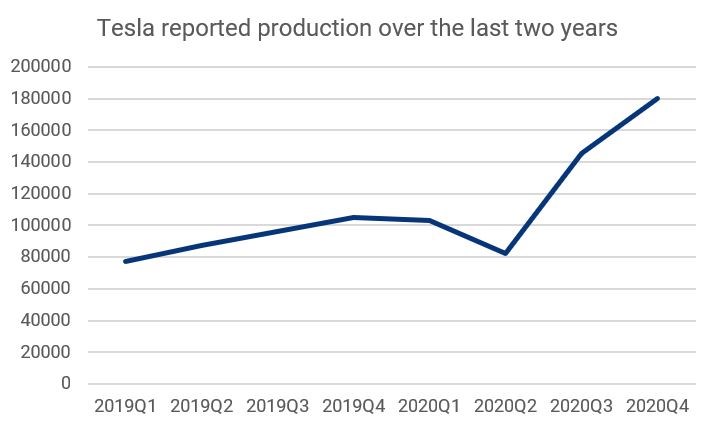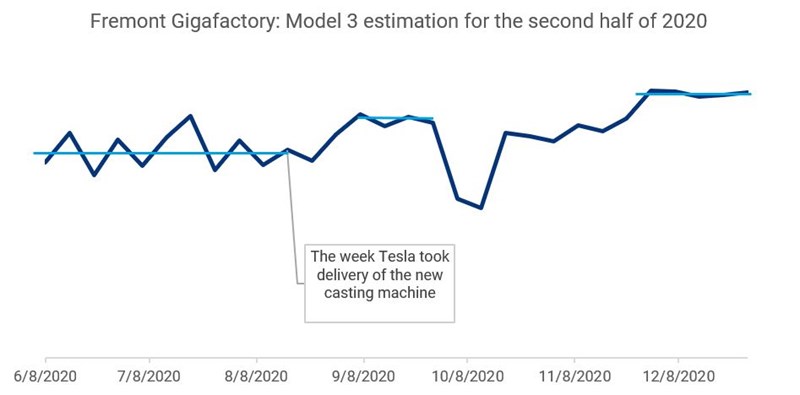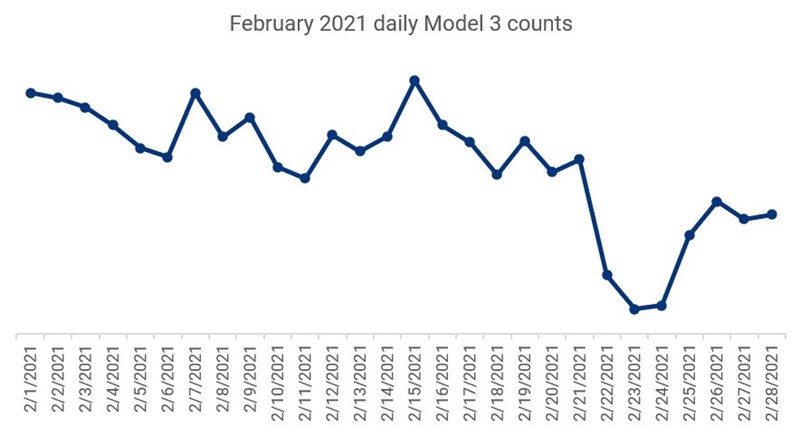Discuss your challenges with our solutions experts
Tracking Tesla's revenue generator: the Fremont Factory
What our proprietary monitoring is capturing around Tesla’s Gigafactories, deliveries and current production levels
1 minute read
Emma Weng
Research Associate, Equity Insight, Short-Term Analytics

Emma Weng
Research Associate, Equity Insight, Short-Term Analytics
Emma models and analyses the US EV market, focusing on production levels, company efficiencies and creative efforts.
Latest articles by Emma
-
Opinion
How badly did Hurricane Rafael hit oil & gas?
-
Editorial
Tracking Tesla's revenue generator: the Fremont Factory
Tesla has become the largest player in the global electric vehicle (EV) market. Its stock was also one of the top movers among automotive makers in 2020, with the price surging over 800% last year. In the words of CEO Elon Musk, “Tesla’s long-term competitive advantage will be manufacturing.” In 2020, Tesla’s global production increased by 39.7% year-over-year, partially due to the in-service of its Shanghai Gigafactory, which started the production of Model 3s in December 2019. As of Q4 2020, Tesla’s Fremont plant is still the largest production site of Tesla vehicles, especially for Model X and Model S. Throughout 2020, Tesla completed several factory upgrades at Fremont, drawing significant insight from the market, which we will discuss in the following using our proprietary data and analysis.
How did the Tesla assembly line improve efficiency?
One of Tesla’s largest improvements achieved in 2020 was when they installed the world’s largest casting machine at its Fremont factory. This giant casting machine brings the rear underbody components of Model 3 and Model Y down to two pieces, whereas previously it consisted of 70 discrete pieces of metal. The casting machine accelerated vehicle production rate and was expected to enhance durability for both Model 3 and Model Y. Our data shows approximately 9% increase in Model 3 production capacity after the casting machine is put in service.
Model 3 production level trend line over the second half of 2020, based on our weekly Model 3 observation from Tesla’s Fremont Gigafactory
Source: Wood Mackenzie
How does Tesla deliver vehicles to the rest of the world?
Currently, Tesla is only producing vehicles at its Fremont and Shanghai Gigafactories, with the Berlin and Austin factories under construction. Apart from exporting 7,000 vehicles to Europe last November, the Shanghai Gigafactory has focused on fulfilling orders within China and for the right-hand-drive countries. The Fremont factory has been responsible for European orders and those from other parts of Asia such as South Korea. On average, we see ~10 Tesla ships sailing from San Francisco to Asia and Europe each quarter in 2020, based on our vessel tracking data.
What is Tesla’s current production level?
On 2 January 2021, Tesla reported Q4 2020 production of 179,757 vehicles, slightly missing the annual delivery guidance by 450 units. Prior to the quarter end, our Tesla Insight Report estimated a lower case production of ~180,000 for the fourth quarter, with base case setting up at 183,000 vehicles. In our base case construction, we estimated Shanghai production at 67,700 units for Q4, vs actual reported of 64,551 units – making up the entire difference and giving us confidence on our Fremont observations.
More recently, a Bloomberg report on 25 February indicated Tesla expects to halt some Model 3 productions at Fremont due to supply chain issues. Elon commented about the shutdown on Twitter and confirmed that the Fremont plant was down for two days (22 and 23 February) and restarted on 24 February. Our proprietary monitors confirmed this change as we observed Fremont vehicles started dropping on 22 February, with observation on 23 February hitting the lowest level of the month and started to recover on 25 February, suggesting delivery was lagged by one day from production.
Daily Model 3 observations from Tesla’s Fremont Gigafactory during February 2020
Source: Wood Mackenzie
During Tesla’s latest earnings call, instead of providing a full-year production and delivery guidance for 2021, the company indicated “over a multi-year horizon, we expect to achieve 50% average annual growth in vehicle deliveries. In some years we may grow faster, which we expect to be the case in 2021.” Investors are eager to see how these numbers unfold this year at the Gigafactories, which we’ll be watching as closely as we can from all available data along with our own sensors and monitors.
Be the first to know
Our weekly Tesla Insight Report includes unique insight into operations. Leverage counts of finished vehicles leaving the Fremont plant, shipping updates and more. To learn more about our offering and to speak with an expert, please click here.









